Pearly Gates Morning Glory 020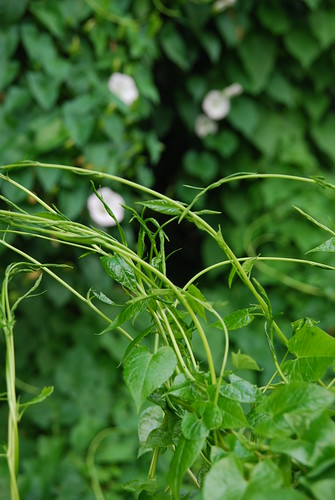
Image by Michael Kappel
Pearly Gates Morning Glories
Check out this photo on my potography website
Pictures.MichaelKappel.com
Ipomoea tricolor is a species of morning glory native to the New World tropics, and widely cultivated and naturalised elsewhere. It is a herbaceous annual or perennial twining liana growing to 2-4 m tall. The leaves are spirally arranged, 3-7 cm long with a 1.5-6 cm long petiole. The flowers are trumpet-shaped, 4-9 cm diameter, most commonly blue with a white to golden yellow centre.
The seeds contain ergoline alkaloids, and have been used for centuries by many Mexican Native American cultures as a entheogen; they were known to the Aztecs as tlitliltzin, the Nahuatl word for "black" with a reverential suffix. In South America, the seeds are also known as badoh negro.
Richard Schultes in 1941 described Mexican Native American use in a short report documenting the use dating back to Aztec times cited in TiHKAL by Alexander Shulgin. Further research was published in 1960, when Don Thomes MacDougall reported that the seeds of Ipomoea tricolor were used as sacraments by certain Zapotecs, sometimes in conjunction with the seeds of Rivea corymbosa, another species which has a similar chemical composition, with lysergol instead of ergometrine. This more widespread knowledge has led to a rise in entheogenic use by people other than Native Americans.
The hallucinogenic properties of the seeds are usually attributed to ergine (also known as d-lysergic acid amide, or LSA), although the validity of the attribution remains disputed. While ergine is listed as a Schedule III substance in the United States, parts of the plant itself are not controlled, and seeds and plants are still sold by many nurseries and garden suppliers.
More information from Wikipedia
en.wikipedia.org/wiki/Ipomoea_tricolor
Pearly Gates Morning Glory 037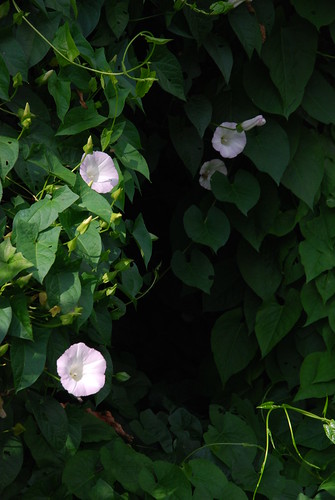
Image by Michael Kappel
Pearly Gates Morning Glories
Check out this photo on my potography website
Pictures.MichaelKappel.com
Ipomoea tricolor is a species of morning glory native to the New World tropics, and widely cultivated and naturalised elsewhere. It is a herbaceous annual or perennial twining liana growing to 2-4 m tall. The leaves are spirally arranged, 3-7 cm long with a 1.5-6 cm long petiole. The flowers are trumpet-shaped, 4-9 cm diameter, most commonly blue with a white to golden yellow centre.
The seeds contain ergoline alkaloids, and have been used for centuries by many Mexican Native American cultures as a entheogen; they were known to the Aztecs as tlitliltzin, the Nahuatl word for "black" with a reverential suffix. In South America, the seeds are also known as badoh negro.
Richard Schultes in 1941 described Mexican Native American use in a short report documenting the use dating back to Aztec times cited in TiHKAL by Alexander Shulgin. Further research was published in 1960, when Don Thomes MacDougall reported that the seeds of Ipomoea tricolor were used as sacraments by certain Zapotecs, sometimes in conjunction with the seeds of Rivea corymbosa, another species which has a similar chemical composition, with lysergol instead of ergometrine. This more widespread knowledge has led to a rise in entheogenic use by people other than Native Americans.
The hallucinogenic properties of the seeds are usually attributed to ergine (also known as d-lysergic acid amide, or LSA), although the validity of the attribution remains disputed. While ergine is listed as a Schedule III substance in the United States, parts of the plant itself are not controlled, and seeds and plants are still sold by many nurseries and garden suppliers.
More information from Wikipedia
en.wikipedia.org/wiki/Ipomoea_tricolor
morning glory with butterfly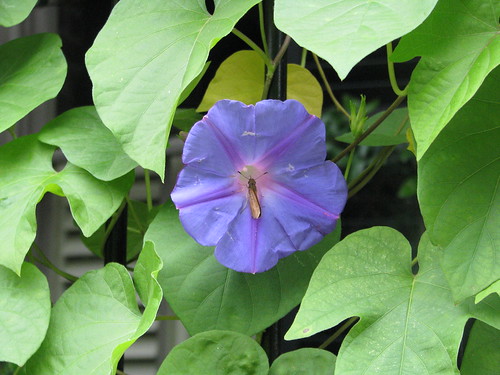
Image by tina in PVB
Morning Glory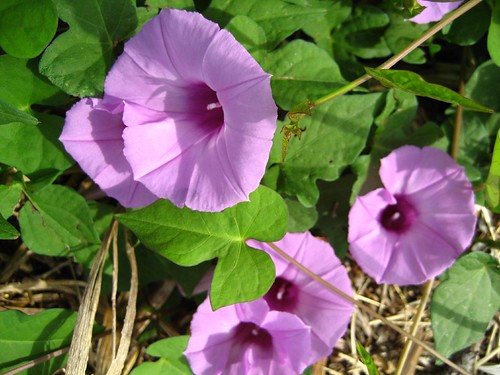
Image by therangonagin
Morning Glory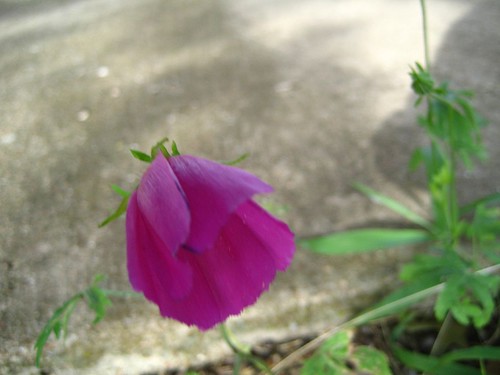
Image by therangonagin
Tidak ada komentar:
Posting Komentar